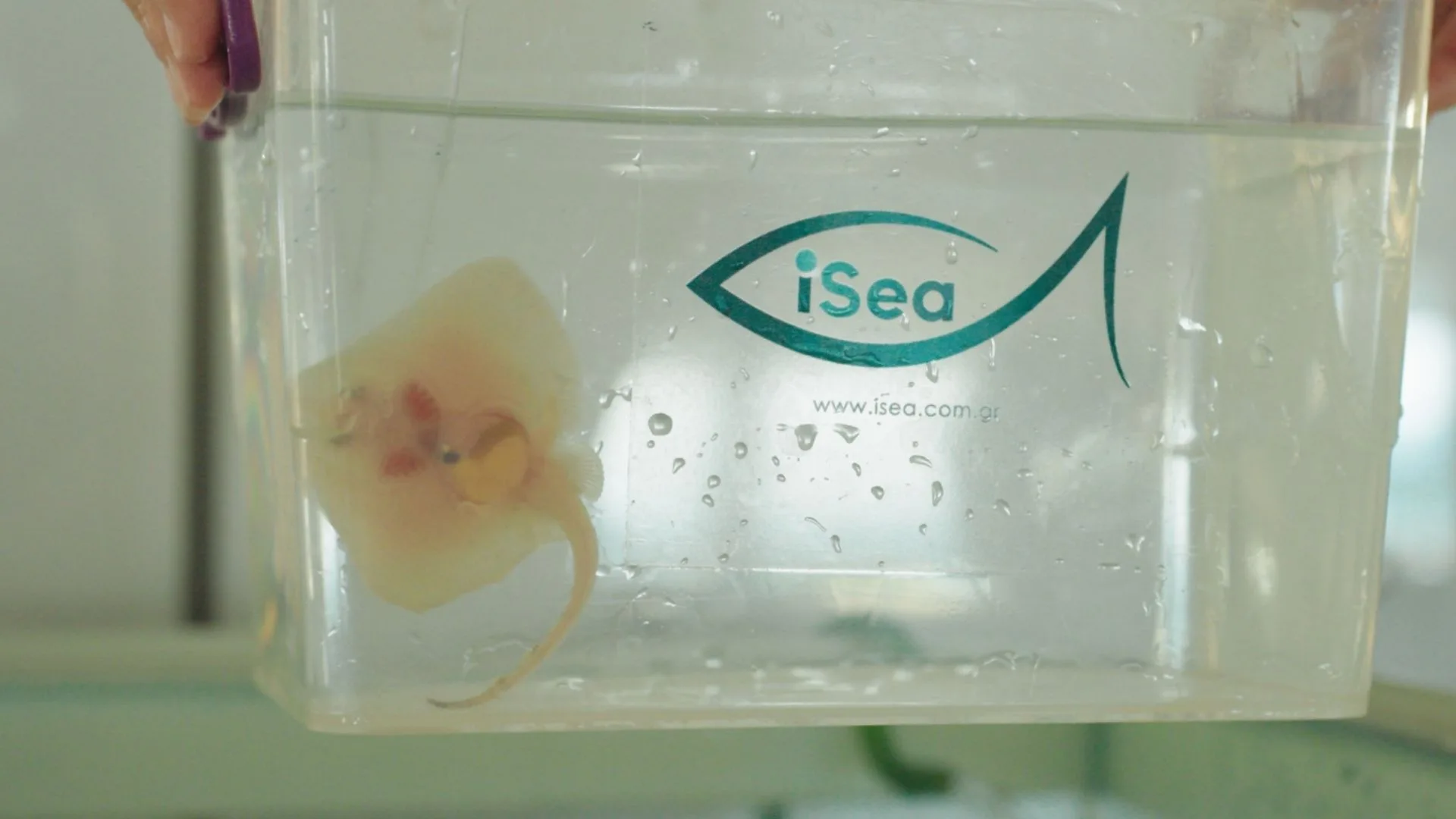A stingray egg just 6 centimeters long developed into a 10.5-centimeter newborn, later released into the sea where it could grow up to 80 centimeters. Nearly half of stingray species in Greece face extinction, making this milestone crucial.
For the first time in Greece, a stingray hatched in an aquarium in Thessaloniki and was returned to its natural habitat, marking progress for “ex situ” (off-site) conservation. This is only the second recorded hatch of the common stingray (Raja clavata) in a controlled Mediterranean setting. The effort is part of the Thermaikos Biodiversity Project by iSea and the Sani/Ikos Group.
According to Greece’s Red List, stingrays are mainly threatened by accidental capture in fishing gear. Their egg cases, often caught in nets, usually do not survive.
To counter this, fishermen from Halkidiki and the Thracian Sea have been working with iSea for two years. They hand over egg cases collected from their nets, which are then transferred to a dedicated aquarium at Sani Resort. Visitors can observe the process as embryos develop under controlled care.
The released stingray grew from a rescued 6-centimeter egg, demonstrating the potential of this method. The initiative also drew on the expertise of Spain’s Associació Lamna, which has created similar hatching protocols across the Mediterranean.
According to iSea, the “journey” from fisherman to sea involved continuous research and refinement of hatching conditions, laying the groundwork for future conservation.
Launched in 2021 as the Thermaikos Dolphin Project, the program has since expanded to protect marine biodiversity, restore stingray populations, and raise awareness among local communities and visitors.
Source: en.protothema.gr

